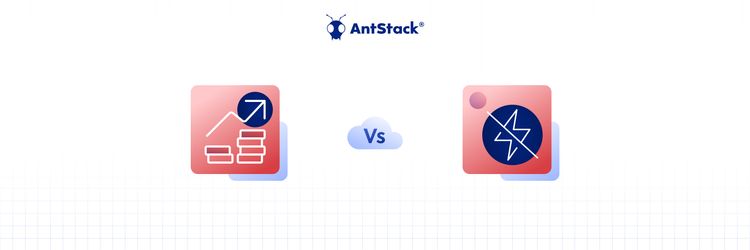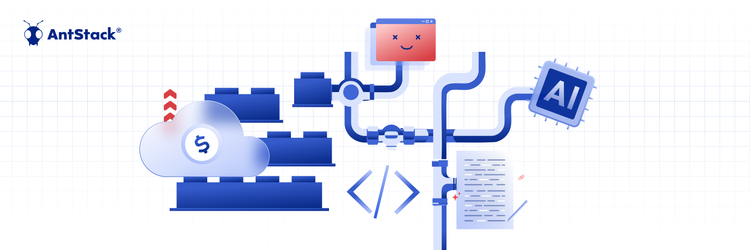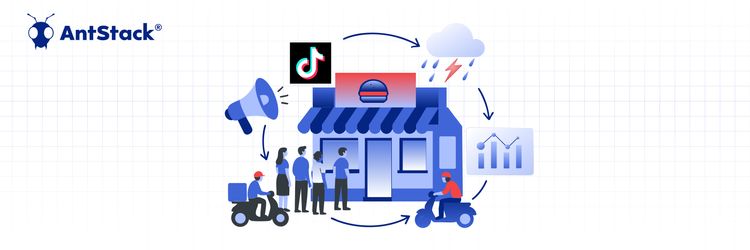It is important to choose between serverless architecture, microservices, and monolithic architecture for the product to accomplish the business needs so that you can enjoy a positive user experience. While building a new product, it is important to consider the product architecture prior to that. Will it be a good idea to deploy the monolithic product so that you will be able to achieve those business objectives easily? Should you split the application into different microservices to interact through APIs?
Do you need to opt for serverless computing services such as AWS Lambda or Azure functions, or will you deploy the code and not care about the specified underlying architecture? From this article, you can seek information about the primary differences between serverless architecture, monolithic architecture, and microservices so that you can decide which is more suitable for your business.
Choosing a monolithic application architecture
Monolithic applications are regarded as the longest-standing ones. Most enterprise legacy solutions are created with a monolithic architecture. A primary benefit of choosing this architecture is that it can perform the job perfectly well. Though it is regarded as a huge black box with unknown innards, such solutions are equipped with clear management algorithms, predictable behavior, and restricted external interaction ports.
The biggest flaw lies in the complexity of updating them, as they will no longer involve the risks of messing up the code from the original development process. It occurs due to the absence of primary developers or owing to the code that is written through the long-abandoned framework.
The biggest drawback of choosing legacy monolithic happens to be the biggest benefit. They have limitations, owing to which they can lead to limited issues with limited solutions. Due to this, operating them becomes predictable and simple.
About the container architecture
A container architecture is recognized as a model in which the functionality is split across various pieces of software. When you have two different services where one involves using an ample CPU while the other uses a bunch of memory, it will be wise to keep them in containers and allocate different CPU and memory to every service. The primary application for different containers is the visualized environment, which is manipulated through the orchestrator.
Scalability happens to be the primary benefit of the container, owing to which businesses prefer to choose this architecture on a wide scale.
Microservices are known to be horizontally scalable. You will be able to scale every service in an independent manner, according to the resources necessary. As the services are designed and well contained, you will be able to divide the concerns properly, which helps save a lot of money and time compared to the monolithic architecture.
When it comes to testing and debugging, microservices are in the middle. It has seen ample growth and support in the past few years. Certain tools have been created by a company to deal with the primary obstacles to maintaining and extending the microservices architecture.
As you choose a monolith, which is challenging to maintain and extend, it is important to move to the containers. It is because, as you choose the microservices, you will be able to define the business domains. It also helps in gaining an understanding of the different services that are necessary and the resources that should be used.
So, in this situation, you should migrate to containers from a monolithic architecture to separate the logic. It involves a certain use case where you will be able to use the monolithics in the containers. However, it is not that common, owing to which it is not considered to be a suitable choice.
If you are trying to create a new idea and looking for a minimally viable product as proof of concept, the monolith happens to be the primary architecture as it involves the least work for initial maintenance and setup. Once you design the code, it becomes easy to move to the monolith at a later stage.
Opting for the serverless architecture
Serverless computing brings the suitable opportunity to execute different functions, from Azure functions to Google Cloud functions to IBM Cloud functions, without the need to care about the infrastructure, involving scaling, backup, tooling, software, and the servers. All you need to do is write the code, execute the code, and let the platform take care of the rest. Choosing the serverless architecture is extremely useful in executing auxiliary processes and one-time tasks.
Choosing this serverless architecture means you do not need to worry about backup configuration, load balancing, or infrastructure setup. All you have to do is do code writing and run the same. The primary disadvantage of the AWS Lambda and the Amazon analog is the cost. You need to pay for the costs of intersystem traffic in the AWS ecosystem. The benefit such a service offers is the reduction of expenses involved in specific use cases, such as image processing, IoT, and video stream data processing, to name a few.
Though serverless still needs to improve a lot to be mature, you can be assured that it is growing at an enhanced rate. As you choose the microservice architecture, it will be wise to migrate to a few of the serverless architectures. It will not be a good idea to move to the serverless architecture at once from the monolithic, as you will not be capable of defining the business domains at a specific point. As there is a lot of commonality between serverless and microservices, such migration becomes a lot easier.
Differences between serverless, containers, and monolith
Serverless, microservices, and monolith are regarded as three extensive architectural patterns within the IT industry. Each one of them has its own set of benefits, which helps you create a specific solution for the consumers so that you can enjoy the most satisfying experience.
Monolith architecture is regarded as the type of architecture in which the app comprises an inseparable and single unit that is executable for the specific server and the client. Containers involve a bunch of services that are divided into unique categories as per their responsibilities. Speaking of the serverless architecture, the specific app is divided into different functions, which are executed with regards to the triggers. The cloud service handles the scalability and resources perfectly.
Choosing between monolith, containers, and the serverless
The project requirements and the available resources happen to be the answers to this. Though the monolith happens to be the conventional approach for software engineering, it is considered effective in certain situations. In spite of the popularity of containers, certain companies prefer to choose monolithic containers.
When a business does not need to release a product too quickly, they consider choosing the monolithic architecture. The container architecture involves simplifying complicated systems. However, it is not the appropriate choice for different projects within software development. Thus, developing apps and complicated systems can reap a lot of benefits from such architecture.
The serverless architecture is beneficial for executing one-time projects along with supporting operations. It is considered a suitable choice for client-intensive applications that are expanding faster and should be scaled infinitely. So, the best course of action is to choose the proper architecture for the task instead of depending on either of them.









